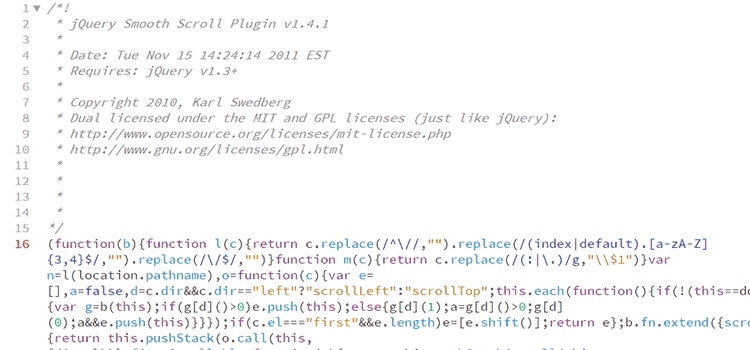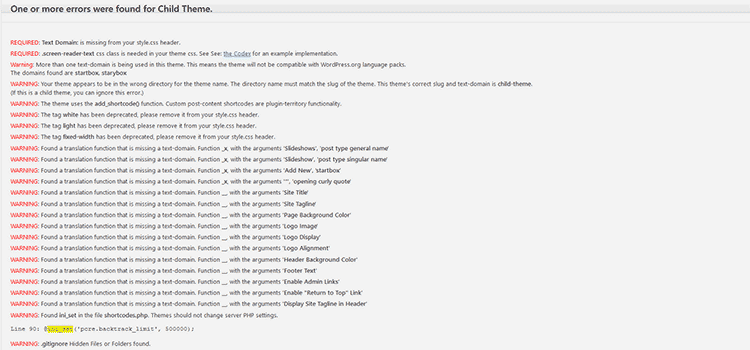WordPress has been around for well over a decade. And, coupled with its massive market penetration, it’s reasonable to assume that there could be a whole lot of outdated installs out there. Much of the worries involved with an outdated WordPress website are focused on the core software itself and plugins. But themes should also be a consideration.
Like plugins, themes can also have security holes that allow for backdoors into your site’s database or file system. There is also the concern of using deprecated code or the inability to take advantage new features at all. Plus, there are usability issues that should concern those of us using newer themes, as well.
With that in mind, here are some signs that suggest it’s time to replace your current WordPress theme.
1. It Doesn’t Use the WordPress Customizer
Added in WordPress 3.4, the Customize API enables site administrators to easily customize various aspects of a website through a UI panel located at Appearance > Customize. Elements such as logos, favicons, fonts, layouts, colors, widgets and menus can all be changed with a few clicks.
Previous to the Customizer, themes often had their own options panel that provided similar functionality. The trouble was that there was no uniformity to the UI, which led to some themes going a bit overboard.
Note that some newer themes still stick with their own version of an options panel. While it may not be a major concern, this could mean that a theme isn’t as efficient as you’d like. Since the Customizer has been around for a while now, it’s generally expected that theme developers stick with standard practices. If a new theme isn’t using one standard practice, it’s worth wondering what others it may have skipped out on.

2. It Hasn’t Seen an Update in Over a Year
If you’re running a third-party theme, it’s reasonable to expect that it will be updated every so often. Even if new features aren’t being added, you’ll at least want to see a few bugs fixed here and there. Otherwise, you get the impression that the theme is no longer a priority for the author.
The longer a theme sits dormant, the more chance of security holes or incompatibilities opening up. While WordPress is usually highly-focused on backwards compatibility, you still may find that an outdated theme creates conflicts with a specific plugin.
So if you haven’t seen an update in quite awhile, it may be time to move on to a theme that has kept up with the times.

3. It Relies on Third-Party Scripts That are No Longer Supported
If you’re using a theme you didn’t develop yourself, this situation is harder to determine. But it’s definitely worth looking into. Outdated or unsupported third-party scripts can be silent dangers, just sitting there unnoticed – until your site is hacked (anyone remember TimThumb?).
You can take a look inside your theme’s directory to see which JavaScript files are included. Opening each one up in a text editor should show you a version number and release date. From there, it’s a matter of doing research. This is definitely not the most fun way to spend an afternoon.
Again, this is one of the problems with themes that haven’t been updated in awhile. Not only could this type of script be a security risk, it puts a site administrator in a tough situation as far as fixing it. If the script is still around and has a more recent version, it still may not necessarily be compatible with the theme. So you may have to take a trip down the rabbit hole to try and get everything working. One possible fix: If you know for certain a script isn’t critical to the functionality of the theme, you could just deregister it and remove it from the directory (just make a backup first).

4. It Isn’t Responsive
Besides the changelog, this may be the most obvious sign that your theme is near the end of the road. Several years ago, it was still common to run into a theme that wasn’t compatible with mobile screens. But, by golly, there’s no excuse for not having a responsive theme in modern times. Not when mobile web traffic is north of 50%.
Of course, there are still plugins and such that will at least provide some sort of mobile presence. For the most part they work – even if not as elegantly or efficiently as a natively responsive theme. The bottom line is that, if you’re running a non-responsive theme, you’re most likely due for a redesign anyway.

5. It Isn’t Built the “WordPress Way”
Not every theme is built equally. Some use older, deprecated code. Others may just be plain sloppy and incompatible with WordPress standards. So it’s worth checking to see how well yours was built.
The best way to find out is to install the free Theme Check plugin. It will run tests to determine whether or not your theme can handle the latest and greatest WordPress features. But it also checks for and points out deprecated code, among other issues. It’s the same plugin that the WordPress theme review team utilizes.
Some issues may not be that big of a deal. An older technique here and there probably won’t cause too much pain (and Theme Check usually points you in the right direction towards making repairs). But if you see a long list of issues, you might do better to start looking for a new theme.
Deciding When to Switch Themes
While the signs above are good reasons to think about switching themes, it’s a step you’ll want to consider rationally. Some of the items above are fixable, while others aren’t necessarily harmful and can wait a little while longer if the site is being revamped in the near future. If you’re using a starter theme or framework as the basis for your site, you can use the latest version of it for the next go around.
The other side of the coin is that these issues all mean that your theme isn’t everything it could be. You might be vulnerable to potential security issues or missing out on what’s new.
Overall, these signs should be taken as the writing on the wall that, eventually, the theme is going to need to be replaced. Nothing lasts forever – especially when it comes to web design. That reality affects WordPress themes just as much as it does plugins and core.
Related Topics
Top